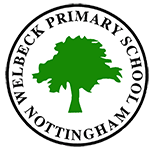1 Using and applying mathematics
Solve problems involving counting, adding, subtracting, doubling or halving in the context of numbers, measures or money, for example to ‘pay’ and ‘give change’
Describe a puzzle or problem using numbers, practical materials and diagrams; use these to solve the problem and set the solution in the original context
Answer a question by selecting and using suitable equipment, and sorting information, shapes or objects; display results using tables and pictures
Describe simple patterns and relationships involving numbers or shapes; decide whether examples satisfy given conditions
Describe ways of solving puzzles and problems, explaining choices and decisions orally or using pictures
2 Counting and understanding number
Count reliably at least 20 objects, recognising that when rearranged the number of objects stays the same; estimate a number of objects that can be checked by counting
Compare and order numbers, using the related vocabulary; use the equals (=) sign
Read and write numerals from 0 to 20, then beyond; use knowledge of place value to position these numbers on a number track and number line
Say the number that is 1 more or less than any given number, and 10 more or less for multiples of 10Recall the doubles of all numbers to at least 10
Use the vocabulary of halves and quarters in context
3 Knowing and using number facts
Derive and recall all pairs of numbers with a total of 10 and addition facts for totals to at least 5; work out the corresponding subtraction facts
Count on or back in ones, twos, fives and tens and use this knowledge to derive the multiples of 2, 5 and 10 to the tenth multiple
Recall the doubles of all numbers to at least 10
4 Calculating
Relate addition to counting on; recognise that addition can be done in any order; use practical and informal written methods to support the addition of a one-digit number or a multiple of 10 to a one-digit or two-digit number
Understand subtraction as ‘take away’ and find a ‘difference’ by counting up; use practical and informal written methods to support the subtraction of a one-digit number from a one digit or two-digit number and a multiple of 10 from a two-digit number
Solve practical problems that involve combining groups of 2, 5 or 10, or sharing into equal groups
Use the vocabulary related to addition and subtraction and symbols to describe and record addition and subtraction number sentences
5 Understanding shape
Visualise and name common 2-D shapes and 3-D solids and describe their features; use them to make patterns, pictures and models
Identify objects that turn about a point (e.g. scissors) or about a line (e.g. a door); recognise and make whole, half and quarter turns
Visualise and use everyday language to describe the position of objects and direction and distance when moving them, for example when placing or moving objects on a game board
Estimate, measure, weigh and compare objects, choosing and using suitable uniform non-standard or standard units and measuring instruments (e.g. a lever balance, metre stick or measuring jug)
6 Measuring
Use vocabulary related to time; order days of the week and months; read the time to the hour and half hour
7 Handling data
Answer a question by recording information in lists and tables; present outcomes using practical resources, pictures, block graphs or pictograms
Use diagrams to sort objects into groups according to a given criterion; suggest a different criterion for grouping the same objects

